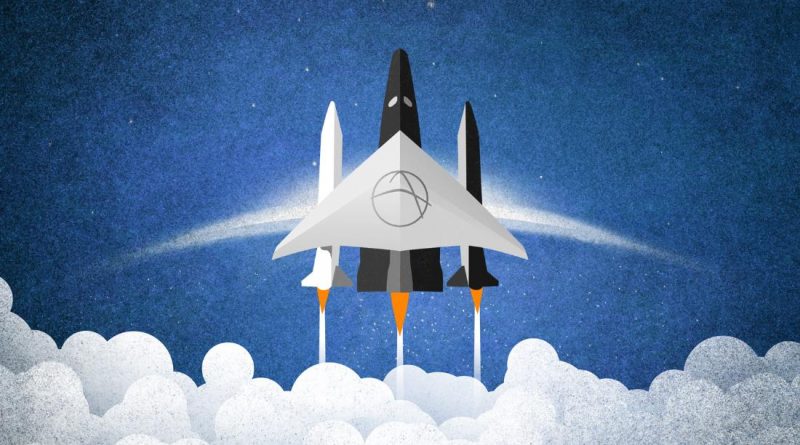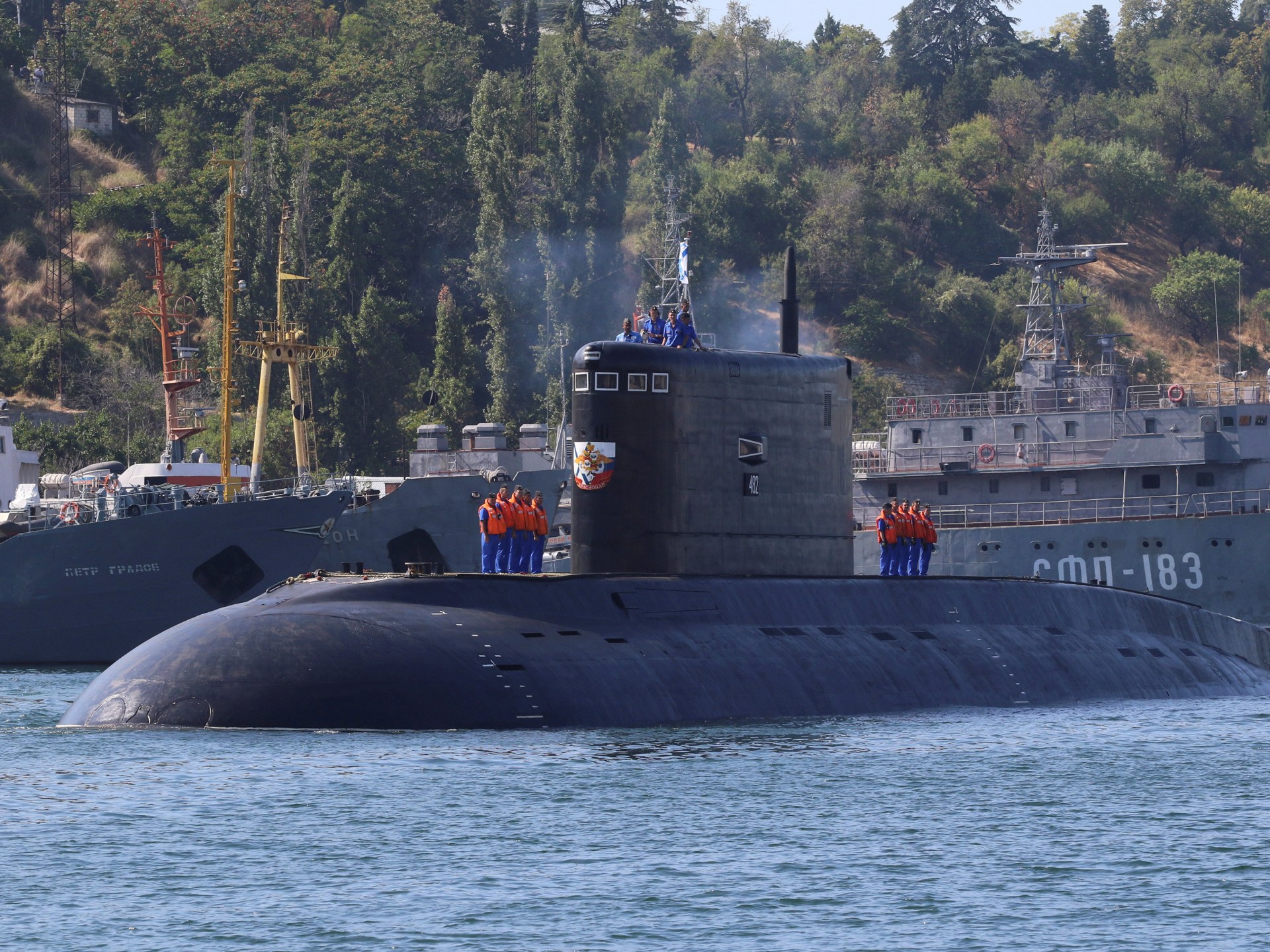Shanghai to New York in two hours? China joins the hypersonic flight race
(CNN) — Shanghai to New York in just a couple of hours? Not a problem when you fly in a hypersonic space plane.
The vehicle launches vertically into the heavens, and upon reaching cruise altitude, the space plane separates from its boosters and then skims the edge of space at 7,000 kilometers (4,350 miles) per hour, landing vertically at its destination with the aid of a tripod-type undercarriage.
According to Space Transportation’s website, the company aims to launch its first suborbital space tourism test flight in 2025, followed by a “complete full-scale global hypersonic vehicle flight by 2030.”
The initiative, if realized, will be the embodiment of China’s ambitions to straddle the potentially lucrative niches of space tourism as well as hypersonic point-to-point flight for business travelers, and is backed by significant players in the Chinese investment landscape.
CNN has reached out to Space Transportation for further comment on its launch plans but has yet to receive a response.
It is rocket science
China’s longstanding association with rocket tech dates back to the battle of Kai-Keng in 1232, when the country fended off Mongol invaders using a barrage of “arrows of flying fire.”
Chinese archers attached bamboo tubes stuffed with gunpowder to their arrows, which were ignited when launched.
In the present-day context of celestial rivalry, China’s main adversaries are now the US and Russia, while the territory being contested is the stratosphere and lower Earth orbit.
Space tourism on the rise
Four people returned to Earth from a three-day extraterrestrial excursion aboard a SpaceX Crew Dragon capsule, marking the end of the first-ever flight to Earth’s orbit flown entirely by tourists or otherwise non-astronauts.
For now, suborbital flights as a means of getting from point A to point B are a ways off.
But space junkies have an ever-expanding universe of options to choose from to get their cosmic fix — ultra-high altitude space balloons, parabolic flights for weightlessness experiences, and soon, even space walks might be possible.
But whatever flavor of space tourism piques the interest of wannabe astronauts, ticket prices are astronomic.
The $28 million bid money went to Blue Origin’s foundation, Club for the Future, which supports space-based charities to inspire future generations to pursue careers in STEM. Sun and five crewmates will fly on the New Shepard spaceship later this year.
Getting closer to the stars, last December, Japanese fashion magnate Yusaku Maezawa, his producer Yozo Hirano, and Russian cosmonaut Alexander Misurkin returned safely to Earth in a Russian Soyuz capsule after having spent 12 days on the International Space Station at a round-trip cost in the ballpark of $80 million.
The cabin interior of Virgin Galactic’s SpaceShipTwo.
Virgin Galactic
“Demand for space travel is strong, and we’ve been selling seats ahead of the pace we had planned,” says Michael Colglazier, CEO of Virgin Galactic, in a statement. The company claims that approximately 700 seats have been sold to date.
But with the high cost of access to space, the market is, at least for now, seen as the exclusive preserve of the super affluent.
“Space tourism is still an emerging area and is very much a billionaire’s turf,” John H. Schmidt, global aerospace and defense industry lead at Accenture, tells CNN.
“While space tourism will likely ramp up, it will take considerable time until costs dramatically drop to reach a far broader audience of passengers than the billionaire-set.”
China gears up for hypersonic passenger flights
And that’s where China comes into the picture, with its demonstrable knack for identifying and formulating a scaled-up response to new market opportunities, and driving down prices for consumers.
China is already a significant player in space, with a nationally sponsored road map that supports a spectrum of initiatives, including satellite technologies, moon and Mars landings, interplanetary voyages and deep space exploration.
With space tourism’s lucrative potential, it’s hardly surprising that China has been ramping up resources and facilities to enable advancement of its own space plane proposition.
In March 2018, for example, China revealed that it was building a 265-meter-long wind tunnel, which can be used to test scale model hypersonic aircraft prototypes at speeds of up to Mach 25 (30,625 kph) at China’s State Key Laboratory of High Temperature Gas Dynamics of the Chinese Academy of Sciences.
“Hypersonic aircraft may be on the horizon, but we’re still at a very early stage. One of the big challenges is that this area requires rare skills. Governments are investing in research and pilot projects to explore what’s possible and develop the skills to someday build production hypersonic aircraft,” says Accenture’s Schmidt.
The viability of hypersonic business travel
But what about the broader prospects for space planes?
Executive travelers salivating at the possibility of significantly reducing their travel time (and experiencing breathtaking views of the planet along the way) now have a growing body of evidence to support the business case for high-Mach-speed business flights: Last year, NASA published the findings of two extensive and independent market studies into commercial hypersonic transportation.
The study concluded that there is enough sustainable demand for high-speed transportation and that “demand will likely come from scheduled air passenger transportation (i.e. airline services) and private jet operations, inclusive of charter services, jet card or membership models.”

Virgin Galactic’s SpaceshipTwo Unity completed its first successful test flight in 2020.
Virgin Galactic
The analysis noted that transoceanic, global “crown jewel” routes are the likely market entry points for scheduled air transportation services, with New York-London; Miami-Sao Paulo; New York-Paris; Los Angeles-Sydney; and Sydney-Singapore being the most promising city pairs for hypersonic flights.
The report identified a total addressable market of 90 transoceanic routes that includes 2.25 million annual passengers and a potential for $16.5 billion in revenue. And from an airline operator’s perspective, the study concluded that “high-speed aircraft that are priced below $146 million remain attractive to operators and individuals alike.”
Time is of the essence
Reaction Engines is a significant player in the global hypersonic ecosystem with its hydrogen-powered ‘SABRE (Synergetic Air Breathing Rocket Engine)’ a new class of engine for propelling both high speed aircraft and spacecraft. SABRE is unique in delivering the fuel efficiency of a jet engine with the power and high-speed ability of a rocket engine, designed for spaceplanes that can take off from a runway and go all the way to five times the speed of sound.

Reaction Engines’ patented hybrid SABRE engine.
Reaction Engines
Dissel points to the main advantage between flying hypersonically vs supersonically by noting that “Concorde was a Mach 2-ish kind of aircraft. But you have to factor in arriving at the airport ahead of time, and the fact that Concorde had to take off, accelerate, climb — it wasn’t moving at Mach 2 the entire flight.”
Traveling from New York to London, instead of 10 hours from airport door to airport door, supersonic only changed that to seven hours, but it didn’t give the business traveler their day back.
“However,” says Dissel, “if you can start pushing above Mach 4, you get to a point where you actually could leave the East Coast of the US in the morning, be in London for afternoon meetings, and then be back home that same day. And so it’s a question of valuing time.”
Environmental sensibilities
While the time-saving benefits of hypersonic flight are irrefutable, the technical and regulatory hurdles ahead for hypersonic travel are numerous.
NASA’s market studies have identified a long checklist of hurdles to overcome, including sonic boom restrictions when flying over populated areas; safety certification; emissions concerns; and worries over operating at significantly higher altitudes where there’s the danger of exposure to radiation.
Additionally, there are challenges of having to build the space planes using special materials to cope with the speed and heat friction generated at high Mach speed. And then there would also have to be special pilot training for flying at the threshold of space.

An illustration of a SABRE-powered aircraft.
Reaction Engines
Most of these challenges are technical, which means they’re surmountable at a price. But unlike in the age of Concorde, whose design and development was propped up with an almost limitless supply of public money injected from British and French taxpayers, tomorrow’s hypersonic space planes will mainly be financed through the private sector.
The other major difference is that unlike the 1960s, present day sensibilities are more focused around air travel’s environmental impact. The optics won’t look good if hypersonic travelers brag on social media about their two-hour flight from Beijing to Dubai if they’re going to provoke spaceflight shaming because they’ve polluted the planet in the process.
“All these companies are trying various methods to offer both the highest speed system and also one that, at least end to end, has a better environmental footprint,” says Dissel.
One of the most critically important determinants of the uptake and eventual success of hypersonic flight, Dissel suggests, “is trying to figure out how you go to zero carbon fuels — that’s something you’ll have to solve.”
The journey of a thousand miles begins …
Where does all this leave China’s aspirations as it stakes its place in the civil space economy? While Space Transportation (Lingkong Tianxing) has its work cut out for it addressing the technicalities to bring its space plane to market as a privately funded venture, it does appear to have the blessing of the state behind it.
And that could be a differentiating factor.
To overcome the long list of hurdles to make hypersonic flight a reality for the broader business travel market — and not just for an elite cohort of super-rich space tourists — the world’s competing space plane builders are going to need deep pockets.
Paul Sillers is an aviation journalist specializing in passenger experience and future air travel tech. Follow him at @paulsillers




